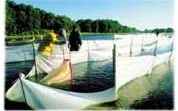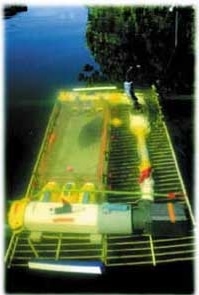Basic and Applied Research

Stroud Water Research Center has sought to address practical issues from its inception. In the early years, however, our scientists focused most of their attention on basic research.
Many of their projects involved gathering and analyzing raw data from a variety of geographical areas and over a long time, and this purely descriptive work established a baseline of information which scientists, at Stroud Center and elsewhere, continue to use and refine more than 30 years later.
By the early 1980s, however, it had become clear that federal funding for basic scientific and environmental research was about to decrease significantly. Since the availability of public money would shrink and the competition for it would become even more intense, contracts for applied research assumed greater importance and the need to set clear parameters for such work became imperative.
In a memo, dated April 6, 1981, Robin Vannote wrote that acceptance of any proposal should be based on the “perception of the project as an opportunity to do reasonably imaginative research in an area with broader application or to conduct long-term or large-scale analysis of ecosystem response to perturbation.”
By that time the Stroud Water Research Center had built a reputation for its insights into the diagnosis, prevention and restoration of polluted waters, and its services were being sought by private companies, public agencies and all levels of government. In responding to requests for such work, Vannote cautioned the scientists to avoid performing routine services “that are nothing more than ‘number mills’ or ‘overhead money generators.’”

In fact, only by maintaining its reputation as “a laboratory known for conducting first-rate basic ecological studies and for understanding the structure and function of river ecosystems” could the Stroud Water Research Center effectively address practical problems over the long term.
There are inevitably conflicts with applied research, as there must be whenever someone else is paying the bills.
At Stroud Center such conflicts are limited by the scientists’ determination to provide honest answers to scientific questions and to advance the Center’s mission “to provide solutions to water resource problems worldwide.”
They accept such work not just as an important source of revenue but also as a way to pursue fundamental research on disturbed and polluted waters and as an opportunity to produce information that will help people make educated decisions.
They insist the projects involve long-term data analysis, address significant scientific questions, and not compromise the integrity of the institution.
Working with public agencies and private corporations has turned out to be an integral and critical component of the Center’s mission. From the beginning, the scientists have sought to make a difference by bringing their knowledge to bear on real problems in the real world. Applied research has provided them with a ticket out of the ivory tower.
